Why you can trust Tom's Hardware
Comparison Products
The 2TB Adata Legend 960 is up against some of the best drives we’ve tested. Our comparison list includes the Samsung 990 Pro, the WD Black SN850X, the Kingston Fury Renegade, the Crucial P5 Plus, the Solidigm P44 Pro, the Sabrent Rocket 4 Plus-G, and the HP FX900 Pro.
Trace Testing - 3DMark Storage Benchmark
Built for gamers, 3DMark’s Storage Benchmark focuses on real-world gaming performance. Each round in this benchmark stresses storage based on gaming activities including loading games, saving progress, installing game files, and recording gameplay video streams.
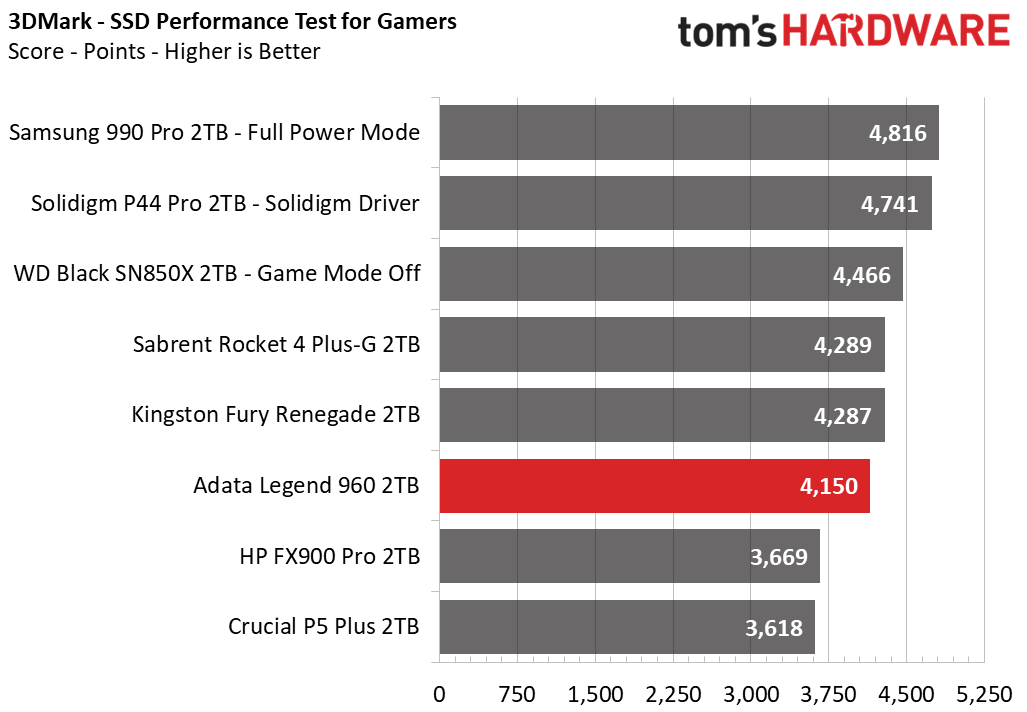


The Legend 960 is mediocre to below average in 3DMark. This is a bit disappointing, given that it took SMI a long time to get this controller to market in comparison to Phison’s E18 and InnoGrit’s IG5236.
Trace Testing – PCMark 10 Storage Benchmark
PCMark 10 is a trace-based benchmark that uses a wide-ranging set of real-world traces from popular applications and everyday tasks to measure the performance of storage devices.
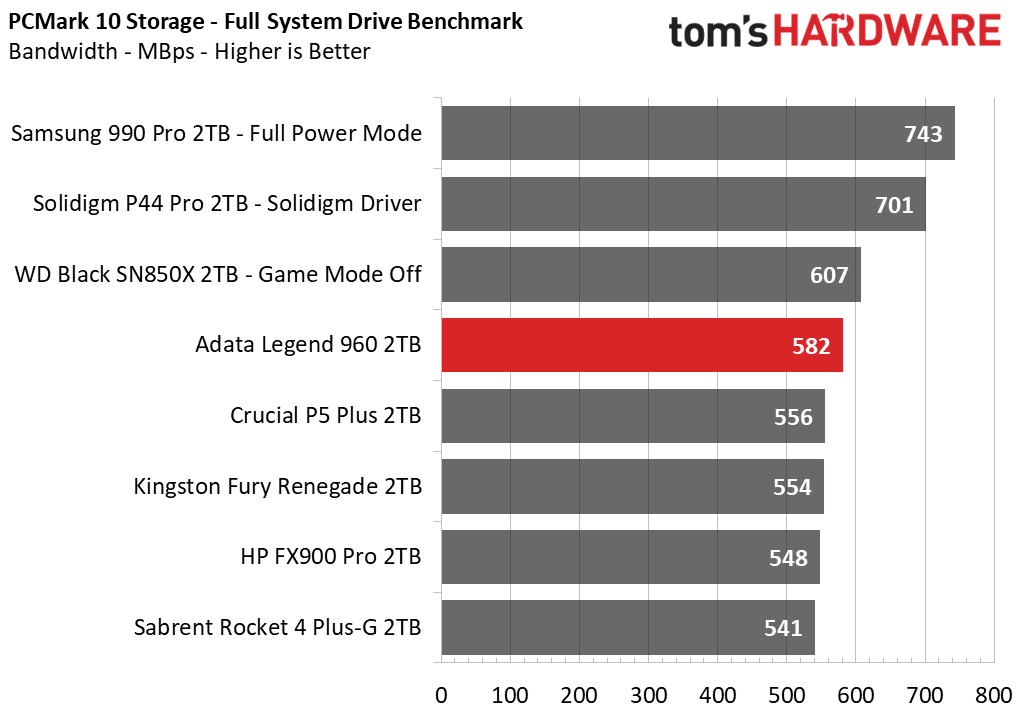
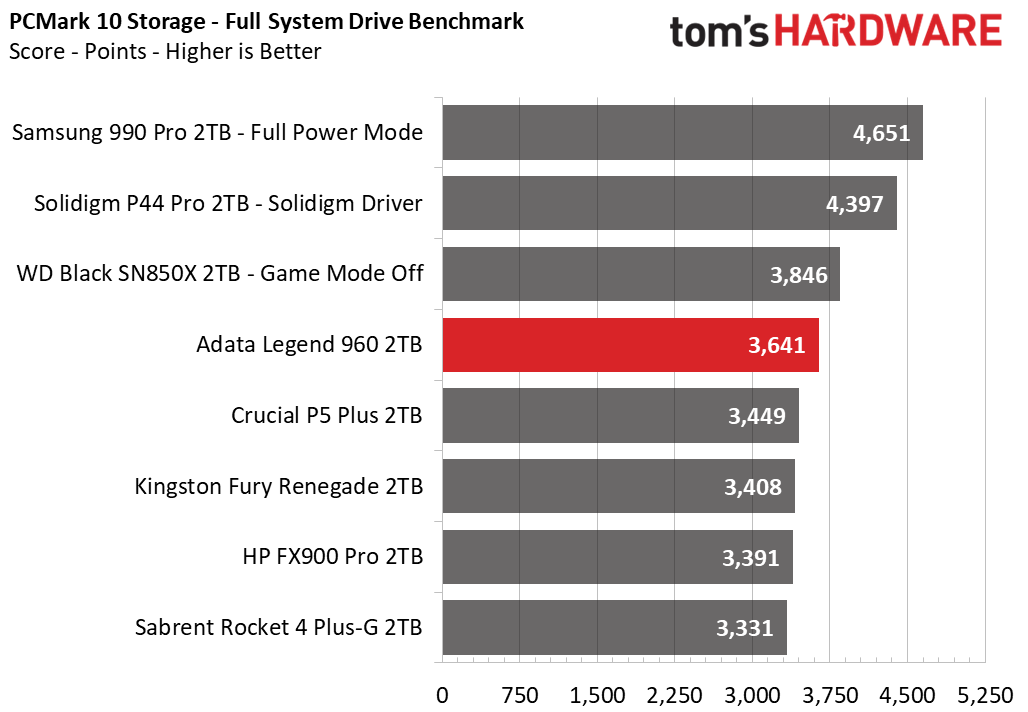

The Legend 960 does somewhat better in PCMark 10, but still lags the best SSDs, namely the 990 Pro, the P44 Pro, and the Black SN850X. The P44 Pro is also sold as the Platinum P41.
Transfer Rates – DiskBench
We use the DiskBench storage benchmarking tool to test file transfer performance with a custom, 50GB dataset. We copy 31,227 files of various types, such as pictures, PDFs, and videos to a new folder and then follow-up with a reading test of a newly-written 6.5GB zip file.
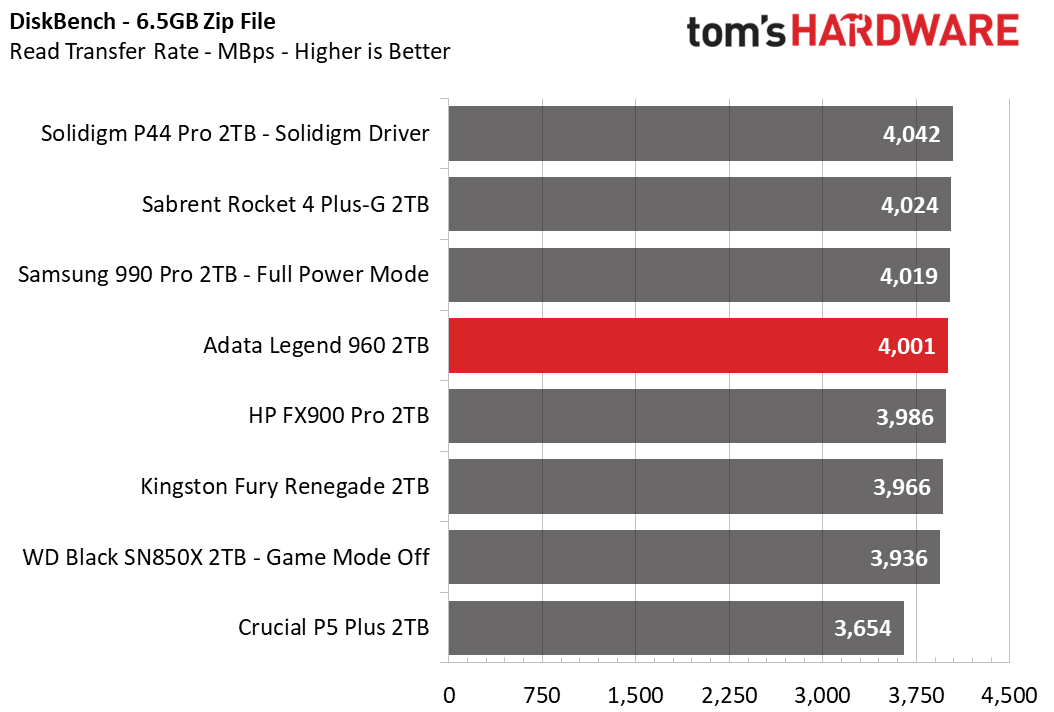
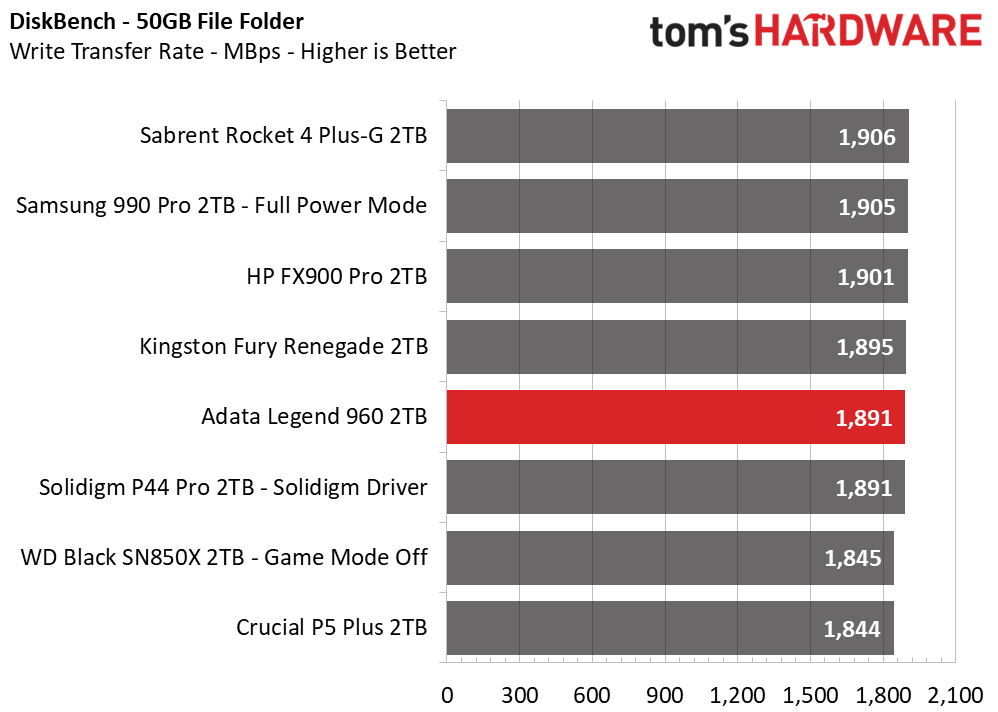
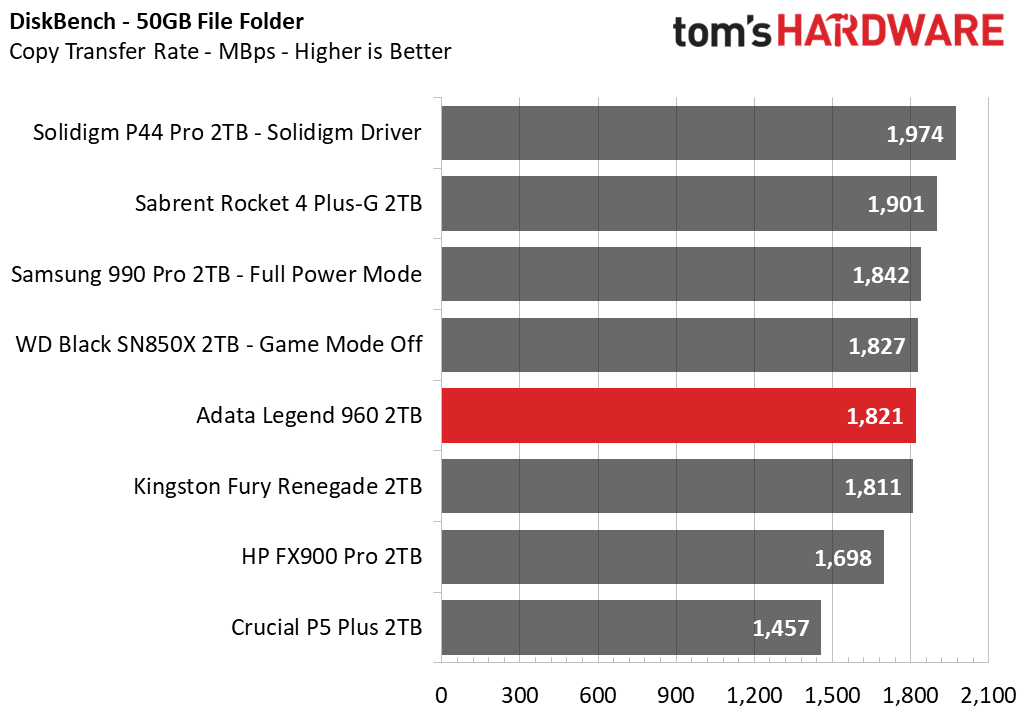
When it comes to file copying, the Legend 960 performs adequately. There’s not a huge amount of improvement possible given the limitations of the PCIe 4.0 interface and the flash. Controllers with faster channels are on the way, such as the previously mentioned SM2268XT at 3200 MT/s, but improvements here will largely come with PCIe 5.0 drives and 232-Layer TLC.
Get Tom's Hardware's best news and in-depth reviews, straight to your inbox.
Synthetic Testing - ATTO / CrystalDiskMark
ATTO and CrystalDiskMark (CDM) are free and easy-to-use storage benchmarking tools that SSD vendors commonly use to assign performance specifications to their products. Both of these tools give us insight into how each device handles different file sizes.
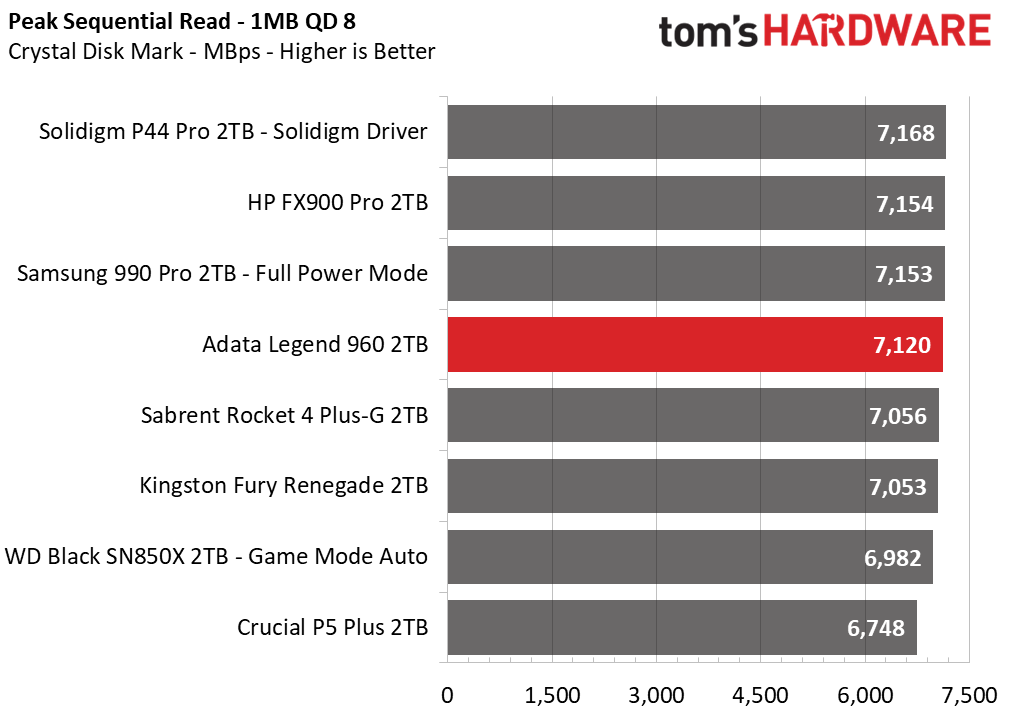
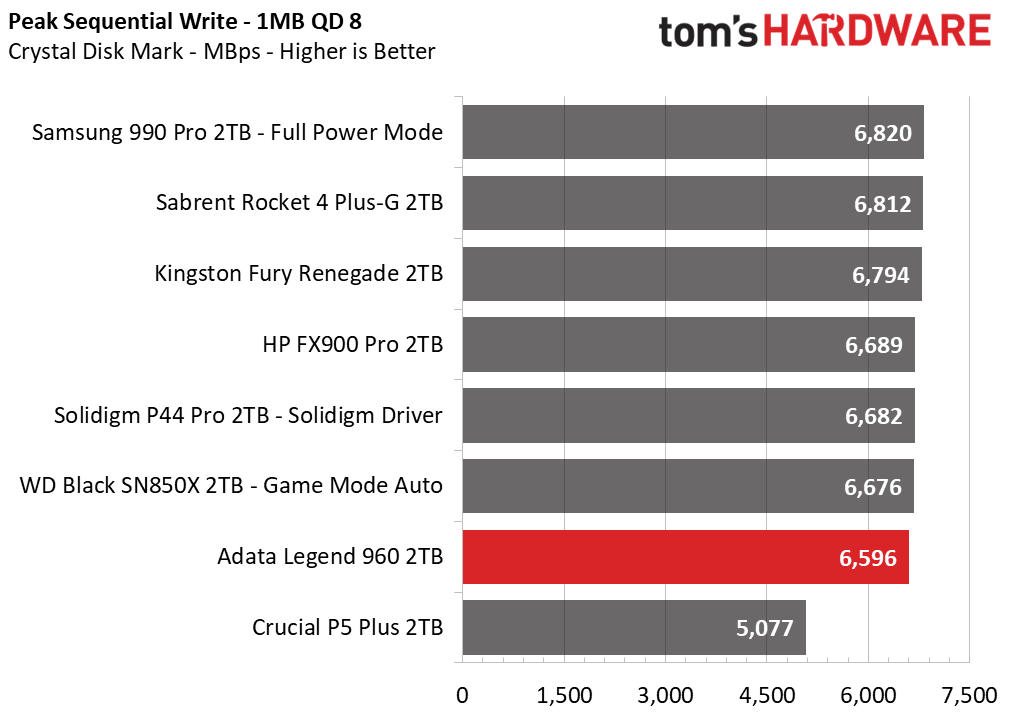

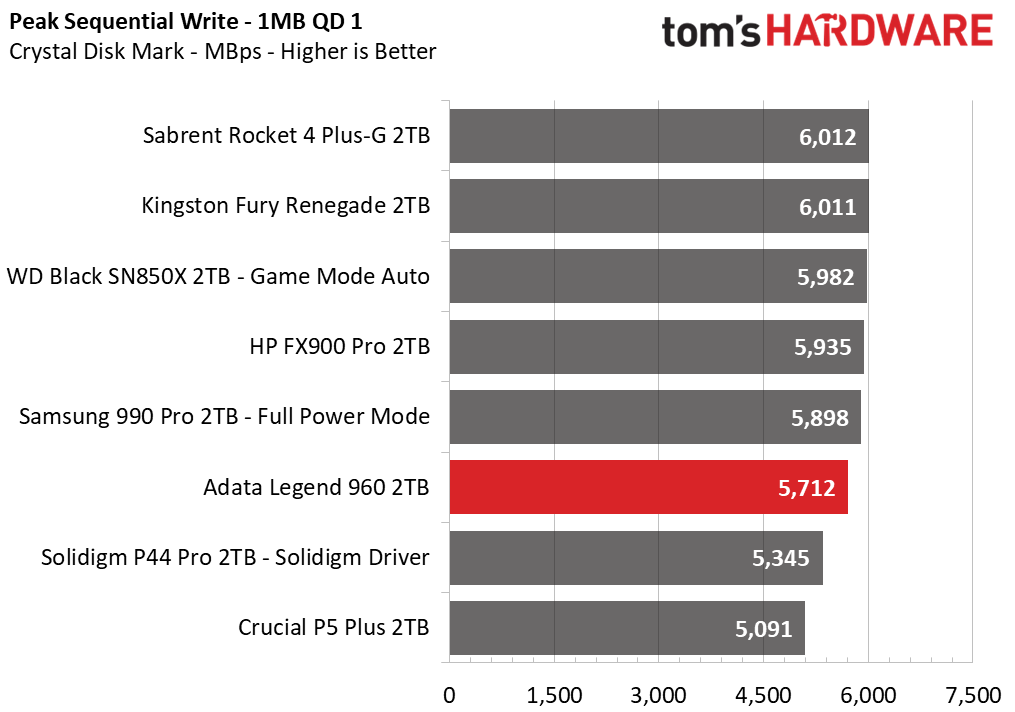
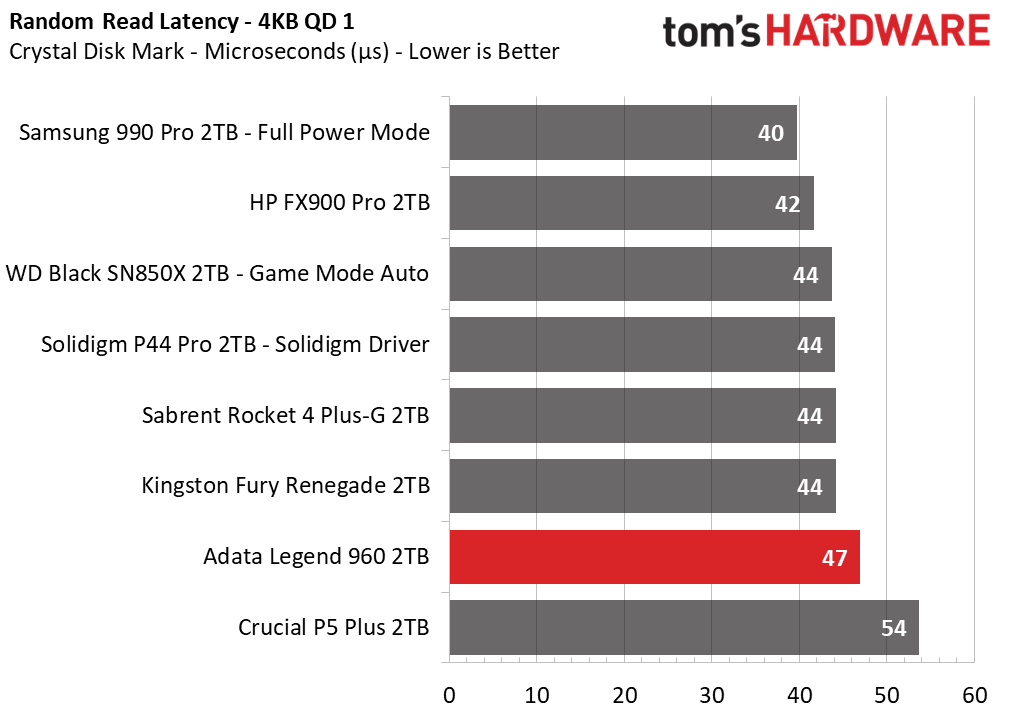
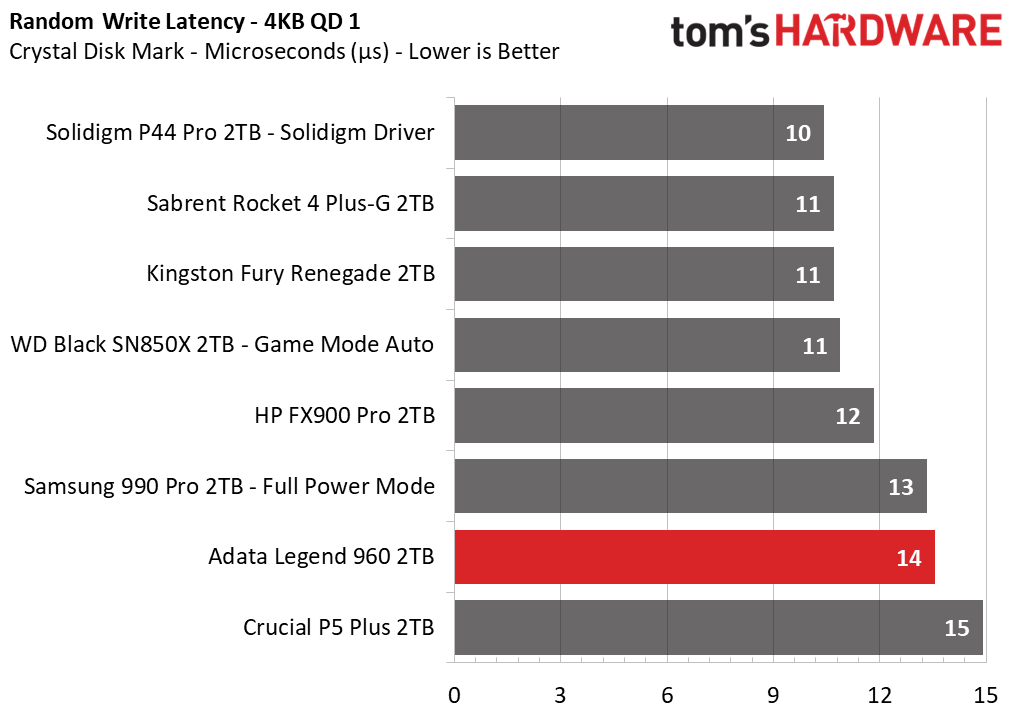
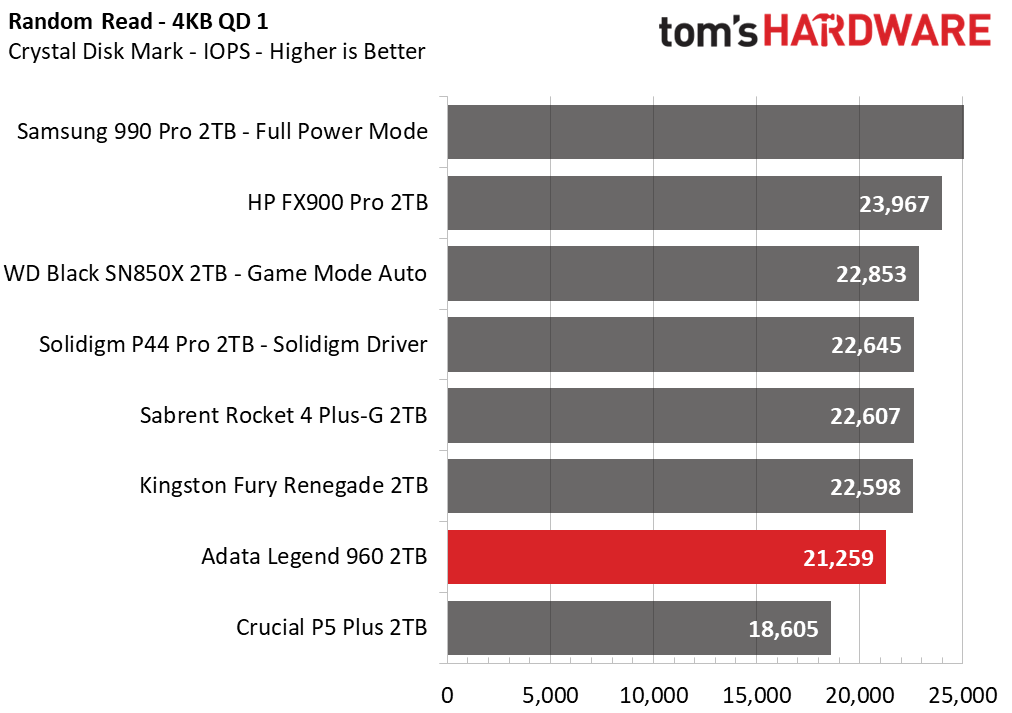

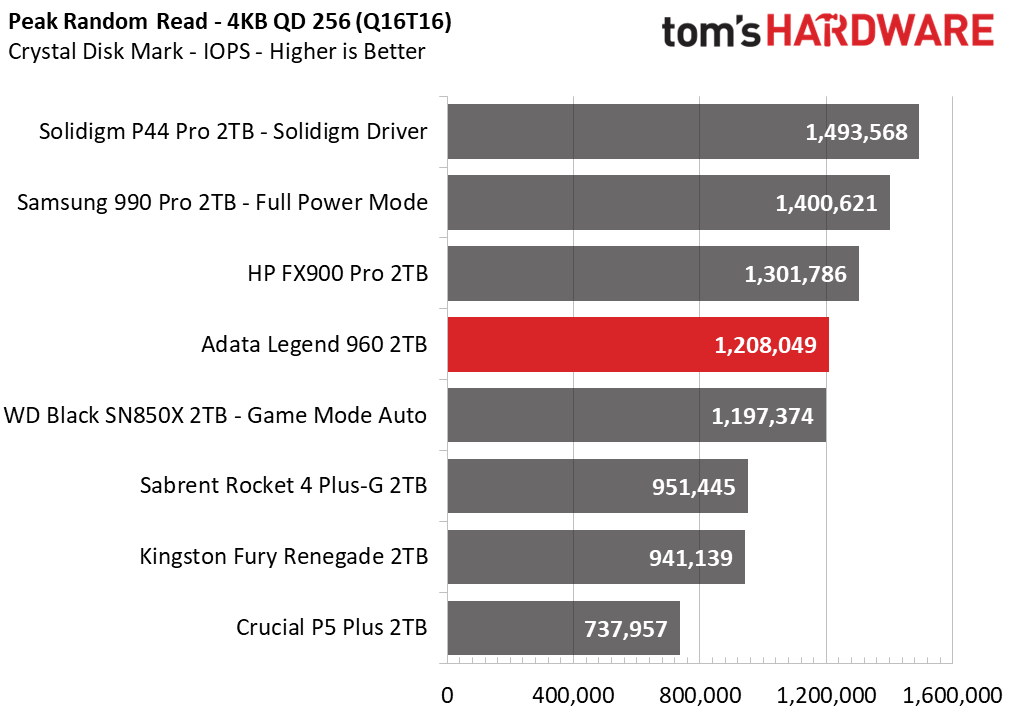
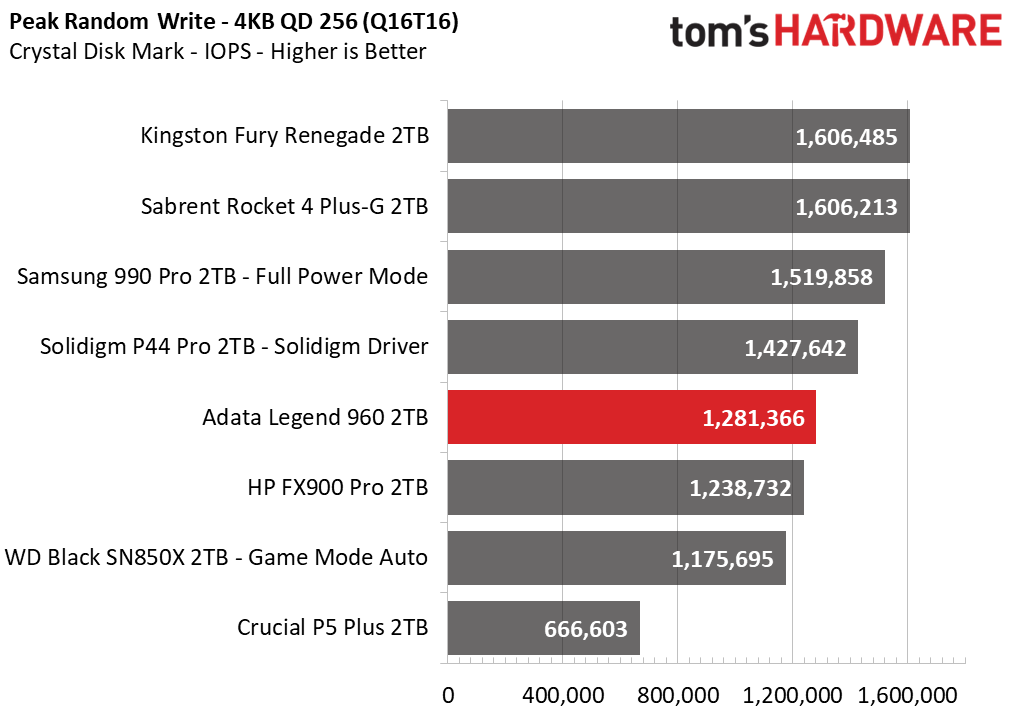


No surprises in ATTO. The sequential performance results are satisfactory, minus a dip with smaller reads at QD1. This may be peculiar to SMI’s current R8-based SSD controller architecture as we saw a similar pattern with the SM2269XT on the Solidigm P41 Plus.
Sequential performance in CrystalDiskMark is also average. This is not the end of the world as the numbers are still pretty good. Random performance is often more important and here the Legend 960 unfortunately trails the competition. Good things are possible with the flash being used, so perhaps this is just conservative controller optimization or design to offer third parties more options for their controllers. Such a trade-off is visible with sustained write performance. We are, in any case, more excited for the SM2268XT in the PCIe 4.0 space.
Sustained Write Performance and Cache Recovery
Official write specifications are only part of the performance picture. Most SSDs implement a write cache, which is a fast area of (usually) pseudo-SLC programmed flash that absorbs incoming data. Sustained write speeds can suffer tremendously once the workload spills outside of the cache and into the "native" TLC or QLC flash.
We use Iometer to hammer the SSD with sequential writes for 15 minutes to measure both the size of the write cache and performance after the cache is saturated. We also monitor cache recovery via multiple idle rounds.
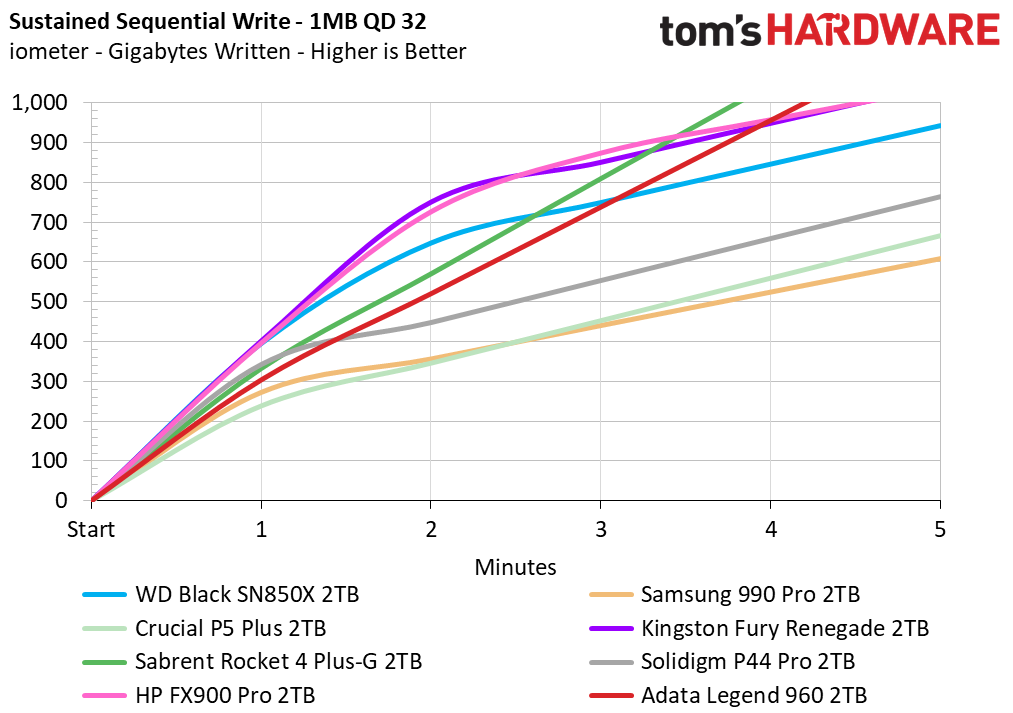

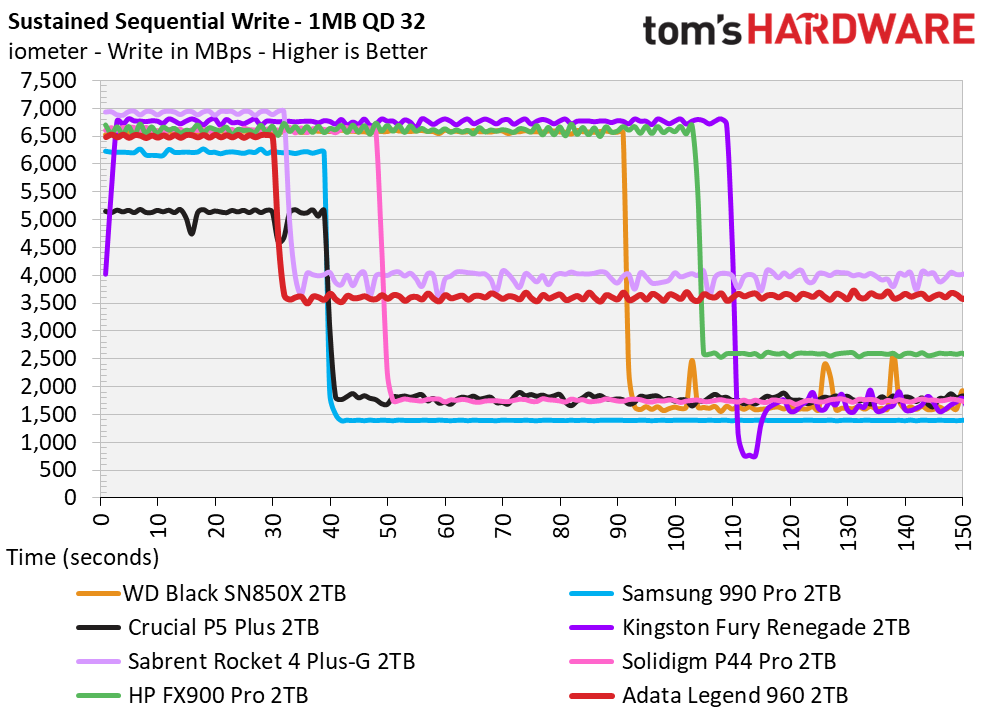

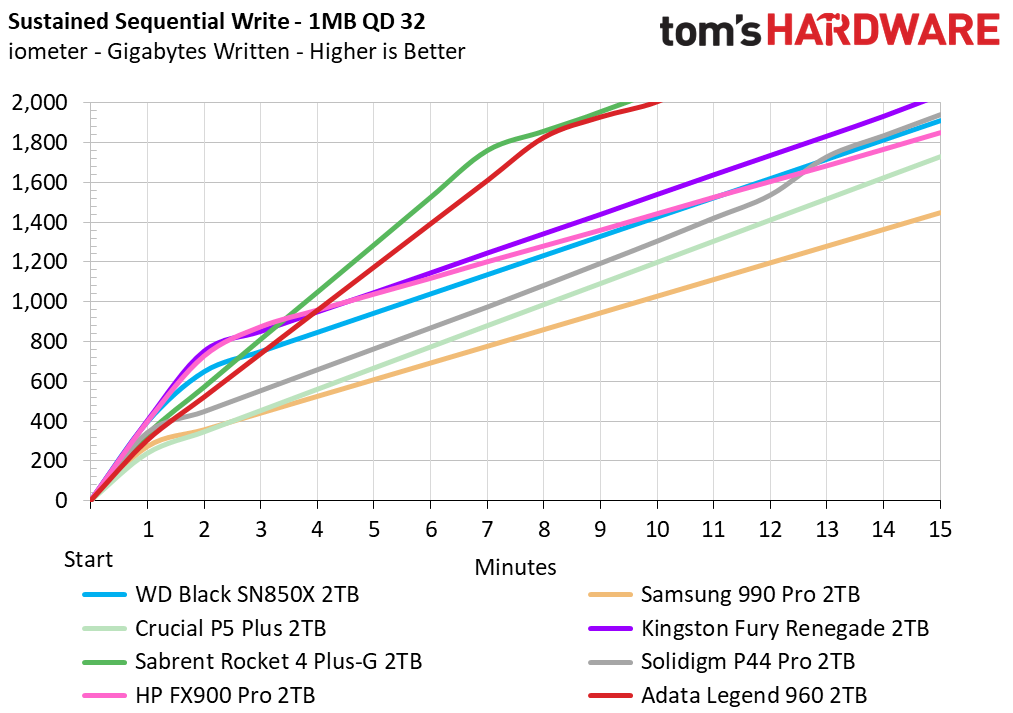
The 2TB Legend 960 writes in pSLC mode for just over 30 seconds at just under 6.5 GBps, demonstrating a cache of almost 200GB. The TLC mode is an impressive 3.59 GBps with a not-too-slow 1.28 GBps folding mode following it. The drive is able to recover after some time back to TLC, allowing it to write an incredible amount in total, second highest of all time for 2TB aside from the Rocket 4 Plus-G.
This is a very good result and the drive is mostly consistent which helps make up for its otherwise lackluster performance results. pSLC recovery is also present and not overly slow. The cache’s size is adequately sized, making this an effective design for any type of use.
Power Consumption and Temperature
We use the Quarch HD Programmable Power Module to gain a deeper understanding of power characteristics. Idle power consumption is an important aspect to consider, especially if you're looking for a laptop upgrade as even the best ultrabooks can have mediocre storage.
Some SSDs can consume watts of power at idle while better-suited ones sip just milliwatts. Average workload power consumption and max consumption are two other aspects of power consumption, but performance-per-watt is more important. A drive might consume more power during any given workload, but accomplishing a task faster allows the drive to drop into an idle state more quickly, ultimately saving energy.
Temperatures are gauged at both idle and load states via sensor and an infrared thermometer. The typical ambient temperature is at 24C. The load state involves sustained writes at maximum speed with measurement ensuing if and until throttling is demonstrated to discover the equilibrium temperature.
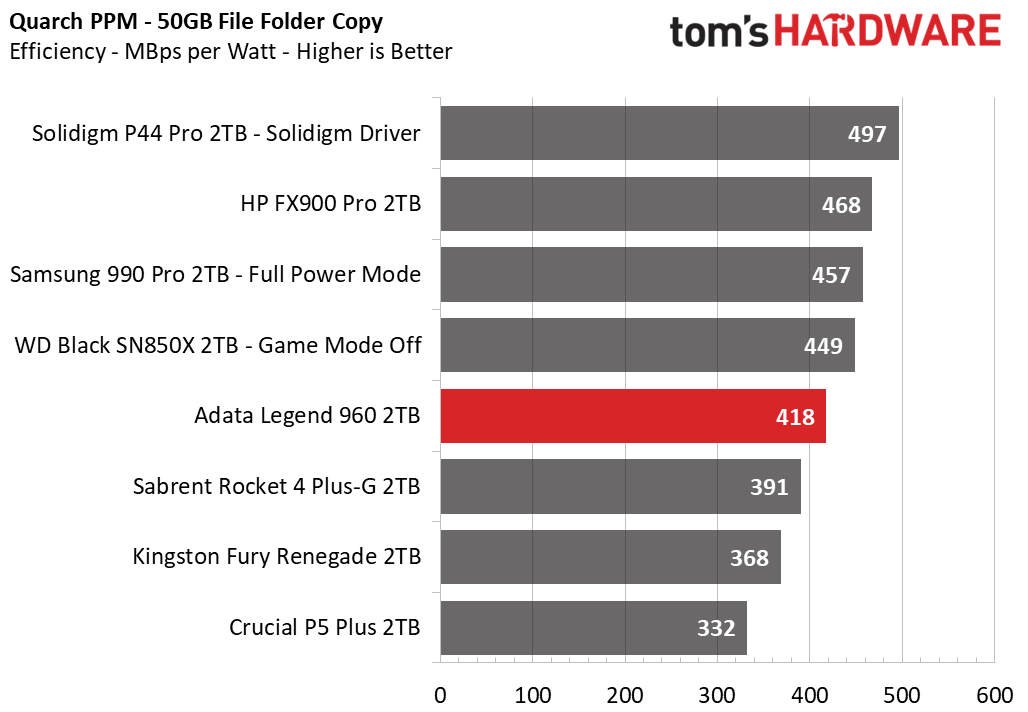
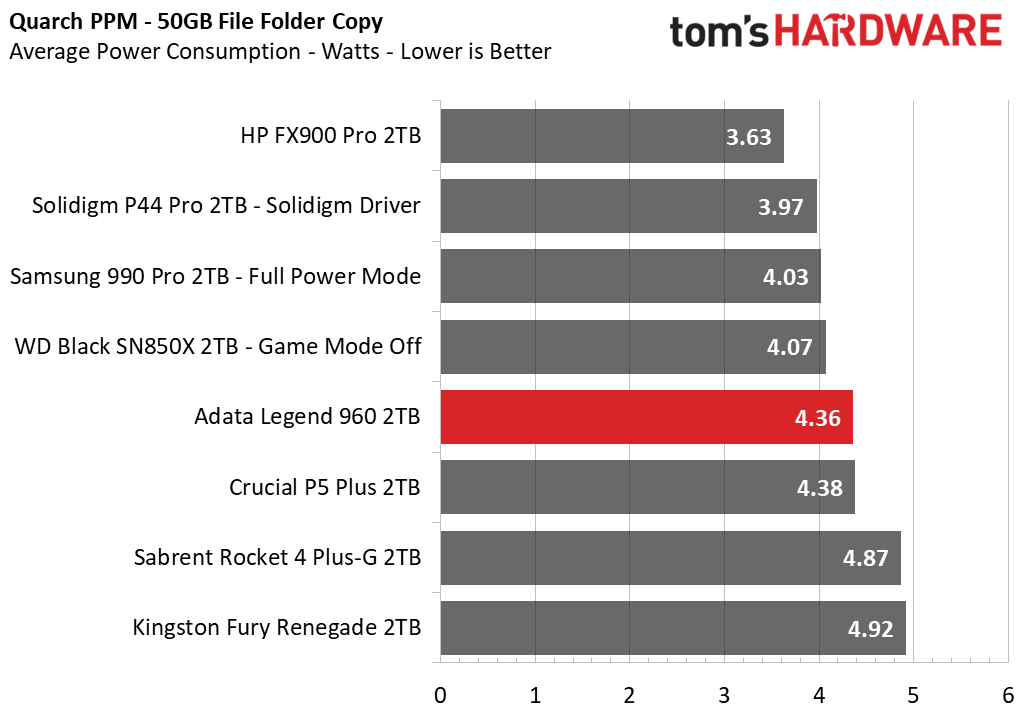
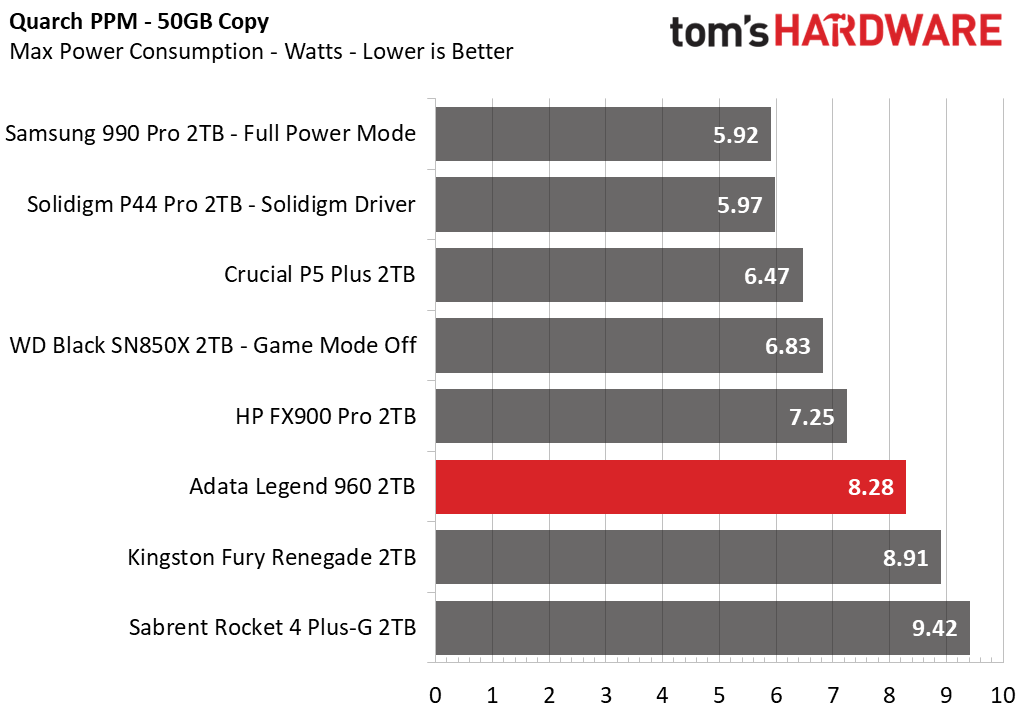

The Adata Legend 960 exhibits mediocre power efficiency under load, but its idle power result is excellent. Our idle power testing currently measures what many users would be running on a desktop for maximum performance, which means that the difference is probably not huge relative to the entire system power draw. Additional power-saving features will further reduce power draw, particularly on laptops. The efficiency results paint a better picture of power consumption under load and the Legend 960 is nothing special there.
The 2TB Legend 960 idled at 34C. After 1TB of consistent writes, the drive hit up to 80C but did not quite throttle. This is likely a borderline case given the performance with pSLC as the drive is rated to increasingly throttle at 78C and 81C. This drive could benefit from a heatsink in some systems and for some usage scenarios, such as sustained writes. It seems that Adata has anticipated this as the Legend 960 Max comes with an ample heatsink. The heat spreader is otherwise sufficient.
Test Bench and Testing Notes
| CPU | Intel Core i9-12900K |
| Motherboard | Asus ROG Maximus Z690 Formula |
| Memory | 2x16GB Corsair Dominator DDR5 5600 CL36 |
| Graphics | Intel Iris Xe UHD Graphics 770 |
| CPU Cooling | Arctic Liquid Freezer II - 420 |
| Case | Streacom BC1 Open Benchtable |
| Power Supply | Corsair SF750 Platinum |
| OS Storage | Sabrent Rocket 4 Plus 2TB |
| Operating System | Windows 11 Pro |
We use an Alder Lake platform with most background applications such as indexing, Windows updates, and anti-virus disabled in the OS to reduce run-to-run variability. Each SSD is prefilled to 50% capacity and tested as a secondary device. Unless noted, we use active cooling for all SSDs.
Bottom Line
The Adata Legend 960 is a mediocre PCIe 4.0 NVMe SSD with average performance and below average power efficiency. The included heatspreader is sufficient to keep the drive from throttling which matches well with its excellent sustained performance, although a full heatsink would be better. Adata’s reputation has taken some hits in recent years, but the drive is backed by a decent warranty with sufficient software support. This makes it a capable product, particularly for desktop and PS5 use, but it is not one that particularly stands out.
One reason it doesn’t stand out is that it’s late to the market, which makes sense since it’s using SMI’s delayed SM2264. It is cool to see this technology and competition in the marketplace, but the Legend 960 faces two important hurdles: drastic NAND price drops and the looming take over of PCIe 5.0 SSDs. It’s a perfectly fine drive but it’s put in a tough spot; it has to be priced right to be worthwhile.
MORE: Best SSDs
MORE: Best External SSDs and Hard Drives
MORE: How We Test HDDs And SSDs
MORE: All SSD Content

Shane Downing is a Freelance Reviewer for Tom’s Hardware US, covering consumer storage hardware.